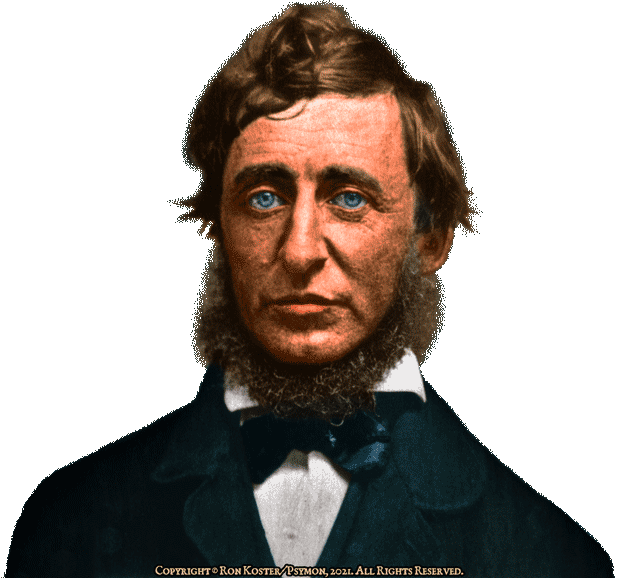Transcendence

Christopher Pearse Cranch
(1813–1892)


Biographical Sketch
by Ann M. Woodlief
Christopher Pearse Cranch may have well had the greatest range of interests of the Transcendentalists, yet perhaps was not a shallow dilettante as sometimes labeled. He was a minister, poet, artist, a writer of children’s fiction, translator of Latin and German, music lover and a caricaturist with a keen sense of humor. Perry Miller called him “one of the most delightful of the Transcendental group — if only because he alone had a feeling of frivolity,” then he calls him “one of the most futile and wasted talents.” Yet was Miller measuring him by Emerson’s standards for poetry, which he himself could not reach?
Cranch was a tireless contributor to the Transcendental periodicals, The Dial, The Harbinger and The Western Messenger, and published four volumes of verse, including Ariel and Caliban (1887). He enjoyed drawing caricatures, especially of Emerson and most notably one which gently teases Emerson for the transparent eyeball passage in Nature. He wrote children’s stories, notably The Last of the Huggermuggers: A Giant Story (1856), and translated Virgil’s Æneid into blank verse.

Cranch’s “Transparent Eyeball” caricature of Ralph Waldo Emerson, one of two similar caricatures drawn sometime between 1836 and 1846. The handwritten caption at the bottom is a quote from Emerson’s Nature, and reads:
“Standing on the bare ground, — my head
bathed by the blithe air, & uplifted into
infinite space, — all mean egotism
vanishes. I become a Transparent
Eyeball!”
Nature, p. 13
Most studies focus on Cranch’s early relationship with Transcendentalism and Emerson, as he followed him in leaving the Unitarian ministry to serve art. Educated at the Harvard Divinity School, he went to Ohio as a missionary where he became a close friend of James Freeman Clarke, editor of The Western Messenger and early Transcendentalist, where he published reviews of Emerson’s controversial addresses. Returning to New England, he discovered that his interest in Transcendentalism threatened his career as a Unitarian minister, so he eagerly turned to painting and writing poetry for The Dial for an enthusiastic Emerson. Even Poe found unusual merit in his poetry, calling him “One of the least intolerable of the school of Boston transcendentalists.” Later, Emerson would become disappointed with his failure to reach the kind of poetic stature he dreamed of, as he was with Jones Very, Henry David Thoreau, and Ellery Channing. In return, Cranch found Emerson’s poetry lacking in “one essential element, the sensuous.” As Buell says, he, like Ellery Channing and Dwight, were “closer to the purely artistic temperament than Emerson,” [1] and were troubled by Emerson’s concept of poet as prophet. Cranch’s close friendship with John Sullivan Dwight, a pioneering music critic, led to many visits to Brook Farm, where he was appreciated for his music and entertainment for the children (like Thoreau, he played the flute). One Farmer, George William Curtis, concluded that Cranch’s was “a long and lovely life, and if great fame be denied, not less a beautiful memory remains.” [2] Readers can judge the value of his poetry for themselves with the selected poems included in this book.
In 1841 Cranch turned from poetry to art, especially landscape painting in the Hudson River School manner, and Italian scenes. Music and theater, especially a love for Beethoven, was also an intense interest and even helped provide a livelihood. David Robinson suggests that Cranch tells us much about America’s “cultural coming of age”:
His early prose exemplifies the interplay of Unitarian sectarianism and romanticism out of which Transcendentalism emerged . . . The relation between his spiritual goals and his æsthetic tastes is similarly indicative of the merging of these two sensibilities in many of the other Transcendentalists. Cranch’s later work, still largely overlooked, suggests the delicate historical link between Transcendental moral concerns, and the more purely æsthetic concerns of a later generation of Americans. [3]

Selected Poems
Correspondences
Gnosis
I in Thee, and Thou in Me
Paintings
Gallery of Paintings

Notes
Biographical sketch copyright © Ann M. Woodlief, 2014.
Used with permission from American Transcendentalism Web.
www.transcendentalism.org 
❦
Questions? Comments? Bug report?
☞ Contact Me! ☜
❦
Acknowledgements
All original text, graphics and web deisign of this entire site
are copyright © Ron Koster/Psymon, 2021 (except as otherwise noted)
and may not be reproduced or distributed in any manner
without explicit permission.
See: A Note on Copyright.
All Rights Reserved.
|





